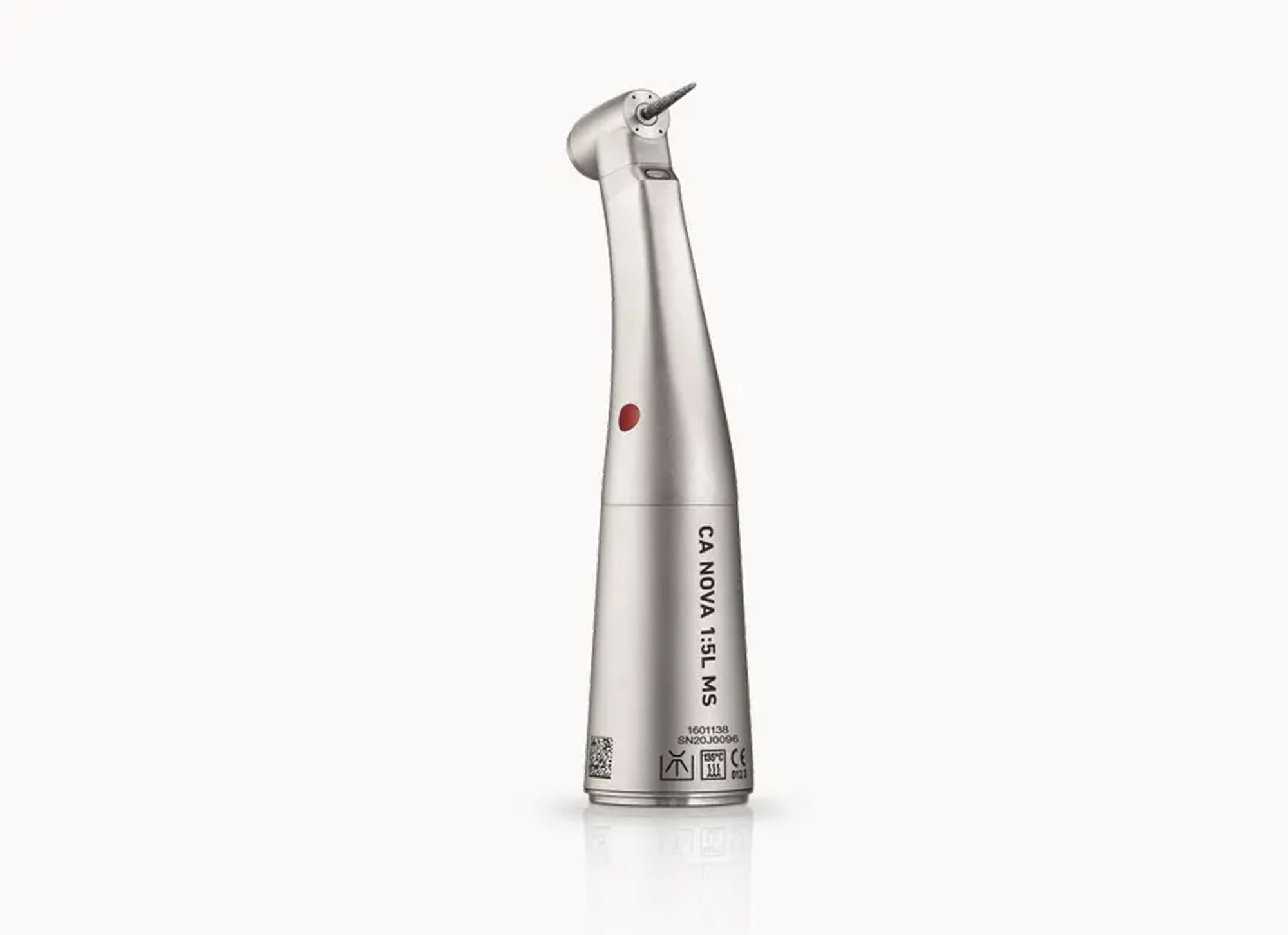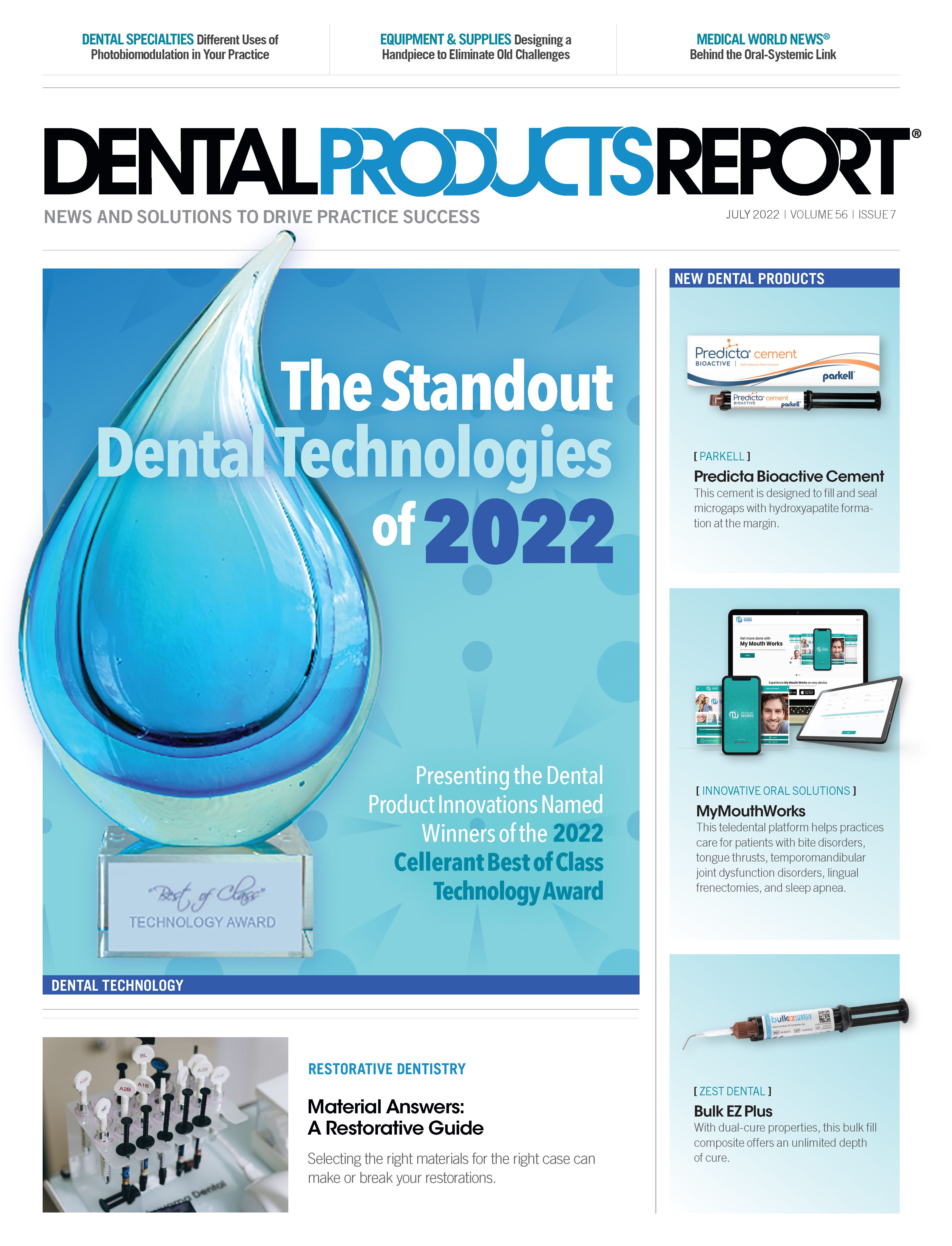Designing a Handpiece to Eliminate Old Challenges
The new Nova handpiece from Bien-Air leverages technologies from outside the dental industry to help address the challenges associated with electric handpieces.
Designing a Handpiece to Eliminate Old Challenges

When engineers at Bien-Air Dental set out to design the Nova handpiece, they started from scratch, without using a single component from previous iterations. They wanted to develop an electric contra-angle handpiece that every dentist would feel comfortable using, putting to rest any lingering concerns clinicians had about switching from air driven to electric.
Four years later, the team launched a lightweight, yet powerful and durable, electric handpiece that has the positive attributes of an air-driven tool, such as a small head size, giving dentists everything they need in a handpiece. To top it off, they did it using technologies that aren’t typically leveraged in the dental industry.
These technologies answered the opposing engineering requirements that made developing such a handpiece so challenging, leading to a tool that allows clinicians to work faster, providing the power they’re after without an increase in the size of the head or overall weight of the handpiece.
In fact, the Nova features what Daniel Call, Bien-Air director of sales, North America, describes as the smallest head for a 4-port water spray on the market that still supports a standard-length bur, which is a critical component of the design. The larger heads that electric handpieces are known for are bulky, making them awkward to maneuver and difficult to see beyond. Engineers knew they had to design a smaller head and a slim handle for better access and enhanced visibility without losing functionality in the process.
Looking beyond the dental industry for answers just made sense. Bien-Air manufactures handpieces in the heart of Switzerland’s Watch Valley, an area Call says is rich with some of the most prestigious technical colleges in the world, which is a benefit when it comes to product development. The companies that produce the machines Bien-Air uses to make its handpieces are also nearby, providing another source of technical inspiration.
“There’s a lot of new technology being researched and tested, and our company being embedded in this area gives our engineers access to a lot of different engineers from other industries,” Call says. “We’re an innovative, privately owned company, so we have the resources and focus needed to take on a project like implementing these technologies, [as well as] the visionaries to know how they might apply to our products.”
Here’s a look at those technologies, as well as others, and how they set the new Nova handpiece apart in the market.
Cylkro Gears
Cylkro gears are common in many industries and are often found in helicopter avionics and high-end race cars, but Call says the Nova is the first in dentistry to take advantage of the technology. What’s the benefit? Double the service life of the gears. The specific geometry of the gear face minimizes the contact surface needed to transfer the maximum energy. This protects against friction, eliminating vibration. Separate from the gears, the monobloc handle is another design feature that reduces the vibration and sound level coming from the handpiece.
When you factor in the stainless-steel construction, the durable handpiece becomes more resistant to shock. The combined features essentially double its service life when compared with previous generations. It’s also more lightweight, making it ergonomic. Miniaturizing and machining the geometry of Cylkro gears into small scale—small enough to fit inside the smallest dental handpiece—requires technical aptitude only found in Switzerland.
Physical Vapor Deposition Coating
Physical vapor deposition is deployed across various industries, including aerospace, to decrease temperature fatigue on metals. Dentistry is now among those industries, with the technology applied to the chuck inside the Nova handpiece.
“We fuse carbon that’s scratch and heat resistant and use it to coat the little mechanical pieces in our product that have to withstand high operating temperatures,” Call says. “This helps us insulate those tiny components from heat. Temperature fatigue is the culprit of normal wear and tear. This technology adds 30% to the life of the chuck.”
Safety Features
One of the biggest safety concerns posed by electric handpieces is patient burns, which is a problem when they’re not maintained properly and when the soft tissue is retracted during operation. The Nova addresses this issue via its CoolTouch+ technology. The chuck is protected by a ceramic insulated push button, so no heat is transferred and the handpiece never goes beyond human body temperature.
A second safety feature added to the Nova is a sterilizable antiretraction valve, which is another industry first. When the operator steps off the foot pedal, the water pressure in the lines decrease, leading to water being sucked into the lines and potentially transferred to the next patient, Call says.
“The valve is acting as a gate. Everything is still in the handpiece swirling around and the contaminants are attaching to the valve,” he says. “If you don’t sterilize the valve, and let’s say it’s in the motor or the tubing, you’re now swapping spit between patients. It’s important for the antiretraction valve to be sterilized, but they’re spring loaded, so we had to engineer and develop something rugged and sturdy enough to withstand autoclaving.”
Electric handpieces in general also produce approximately 40% fewer aerosol spray patterns than air-driven handpieces, Call says, which is an even more important safety consideration for dentists since the beginning of the COVID-19 pandemic.
An Outside Perspective
The project manager who headed up the Nova design team was trained as a watch mechanic and completed a residency with one of the companies that produce the CAD/CAM machines that build Bien-Air handpieces. He was able to bring insights from another industry and see firsthand the new performance and capabilities the machine offered, as well as how he could apply it to design a new electric handpiece that’s different from anything else on the market.
“We were able to build Nova from the ground up, and that’s because we have these new machines with new capabilities,” Call says. “They can drill more dense material, [such as] stainless steel, so the handpieces are more lightweight and can more precisely reduce the number of components in the handpiece to reduce the noise level and vibration tolerances we want. We could completely rethink and redesign everything.”
Why Make the Switch?
The Nova electric handpiece has achieved a long list of firsts, borrowing technologies from other industries to deliver a product that truly meets dentists’ needs. Along with a slim neck and lightweight stainless steel, it features the smallest head for 4-port water spray while still supporting a full-length bur. It offers safety features, including the sterilizable antiretraction valve, that other handpieces don’t, as well as technologies that keep components cool to reduce temperature fatigue and that eliminate the risk of third-degree burns for patients.
The ergonomic handpiece is also designed to reduce noise and vibration, leading to a more pleasant experience for clinicians and patients. The Nova design team thought outside the dental box to address the concerns clinicians have about electric handpieces, giving them access to a tool that has the power they want but with a smaller head size.
“If you’re an air-driven user switching to the Nova, it’s going to completely change [how] you approach dentistry,” Call says. “It’s going to improve the patient experience. It’s going to improve your quality of life, and it’s going to decrease your frustration and the noise in your office. If you’re an electric user switching to Nova, you’re going to notice much better performance with less vibration, more power, less noise, and a small enough head to accomplish any procedure without any limitations of access.”
